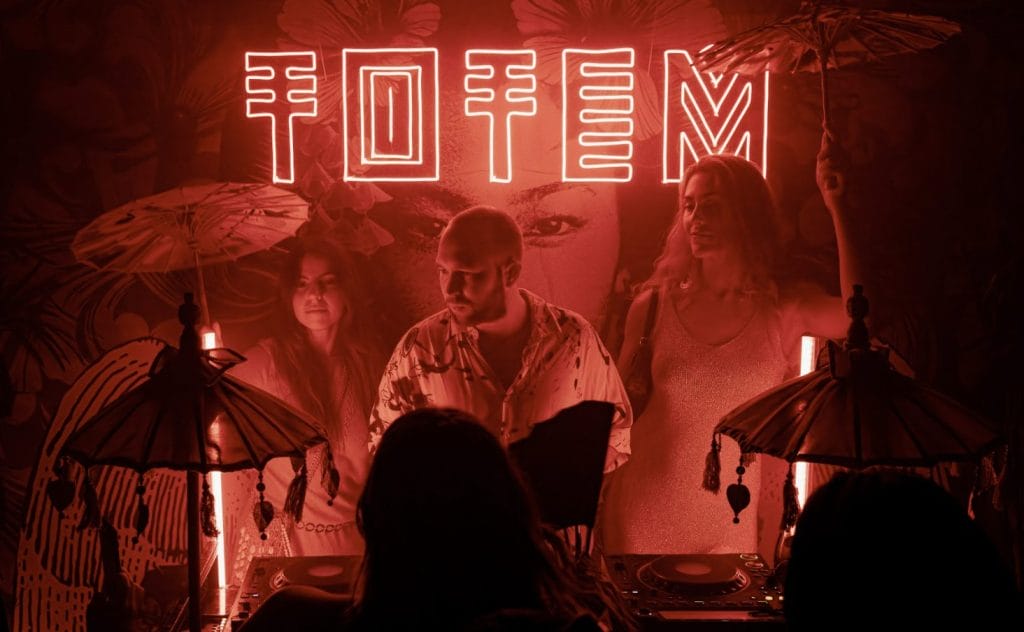STAY GOLDEN has been on our radar for a while now—especially if you’ve caught any of his TOTEM Society sets across Asia—but his latest release “Khale,” which was recently released on The Magic Sun, feels like one of those moments where everything clicks. It’s lean, focused, and lands with intention. Built around a haunting vocal from longtime collaborator NIZAM, the track doesn’t chase peak-time energy. It sits in that late-night space where groove and tension do all the work.
The two artists have been close since childhood, which explains the chemistry. You can hear it in how the vocal isn’t just placed on top—it’s part of the rhythm. There’s a call-and-response happening between the drums and the voice that gives “Khale” its identity. It’s a tight, patient production with just enough detail to keep your ears locked in.
In this interview, he breaks down how the track came together, why certain ideas felt worth chasing, and how he keeps his sound evolving without losing the thread. We also talk about his workflow, the role of originality in dance music, and what’s next for both him and NIZAM.
It’s a clear look into the process behind one of his strongest releases yet.
The track blends afro-house grooves with tribal and atmospheric textures. How did you approach the production to achieve this balance?
For me, it was about keeping the groove hypnotic but giving the track space to breathe. I started with organic percussion and a rolling bassline to create that driving energy.
Then I layered evolving textures—pads, subtle melodic elements, atmospheric swells—to make it feel cinematic. NIZAM’s vocals played a huge role in shaping the final balance.
I wanted his voice to feel like an instrument, weaving in and out of the groove rather than sitting on top of it.
NIZAM’s vocals add a powerful dimension to the track. How did this collaboration come about, and what did his voice bring to the final piece?

NIZAM and I go way back—we’ve been friends since we were kids and have worked on music together before. But with “Khale,” everything aligned in a different way.
His voice has this raw, hypnotic quality that instantly elevated the track. It wasn’t just about adding a vocal—it was about channeling something spiritual through the music. The way he delivered the vocal felt like a chant, like a ritual. It gave the track a whole new dimension.
What made “Khale” worth finishing? Be honest—what kept you from dragging it into the “might finish later” folder on your hard drive?
That vocal. The moment I heard it in the mix, I knew this wasn’t a “maybe later” track. Some tracks you have to force yourself to finish, but this one felt like it had a life of its own.
Also, the fact that it was a collaboration with NIZAM made me even more committed to seeing it through. It felt personal—like a project that was meant to happen.
Do you think about originality when you’re writing, or does that come later—like in the mix, or once the track is done and you’re asking, “is this me?”
I don’t think about originality in the beginning. I just follow my instincts. The best ideas happen when you’re not overanalyzing.
But at some point, I do step back and ask, “Does this feel like me?” If it sounds too familiar or predictable, I’ll push it somewhere unexpected—whether that’s in the arrangement, sound design, or mix. For me, originality isn’t about forcing something unique; it’s about making something that feels real.
How often are you intentionally not doing what you know would work—like not adding a riser or not layering that one preset that always hits—just to see what happens instead?
Very often. I love breaking patterns.
There’s comfort in doing what you know will work, but sometimes the most interesting moments come from not doing the obvious thing. Maybe I won’t add a kick where people expect one, or I’ll let the tension build without a riser. It’s about trusting the groove and letting the track breathe in unexpected ways.
There’s this pressure to be unique, but also to make stuff that connects fast. How do you personally thread that needle? Or do you ignore it completely?
I don’t ignore it, but I don’t let it control my process either.
If you focus too much on making something that connects fast, you risk chasing trends instead of building something lasting. I try to make music that moves me first. If it resonates with me, it’ll find the right audience.
In “Khale,” was there one element—maybe a pad, a chord voicing, a swing setting—that pulled the whole thing into focus for you?
Yes—the call-and-response between the vocal and the percussion.
Once I locked in that interaction, everything else just fell into place. It created this hypnotic push and pull that gave the track its identity. I also played a lot with reverb and delay on the vocals to make them feel like they were floating through the mix—almost like echoes from another time.
You’ve been releasing under STAY GOLDEN for a time now. Do you feel like you have a center point—something that ties your releases together? Or are you still figuring that out track by track?

There’s definitely a common thread—deep grooves, hypnotic textures, and a tribal influence. I love creating music that feels like a journey, where the listener gets lost in the rhythm.
But I’m still evolving. I don’t want to get too comfortable or predictable. Every track is an exploration, and I want to keep pushing my sound forward.
How do you see this track fitting into a DJ set? Is it designed for peak-time energy, deeper moments, or something else?
It’s definitely a journey track. It has enough drive to keep people moving, but it’s also deep and hypnotic.
I see it working in those late-night, lost-in-the-moment sets—where the energy is high but there’s still space to breathe. It’s not about peak-time intensity—it’s about pulling people into a trance-like state on the dancefloor.
Beyond this release, what’s next for you? Any upcoming projects or collaborations we should keep an eye on?
There’s a lot in the works—new releases on Songuara, Melody of the Soul, Circle of Life, some fresh collaborations, and pushing my sound even further.
And of course, NIZAM and I aren’t done yet. We’ve made music together before, and I have a feeling “Khale” is just another step in our story.
The post STAY GOLDEN On Restraint, Trust, and Building “Khale” with NIZAM – Out Now On The Magic Sun appeared first on Magnetic Magazine.